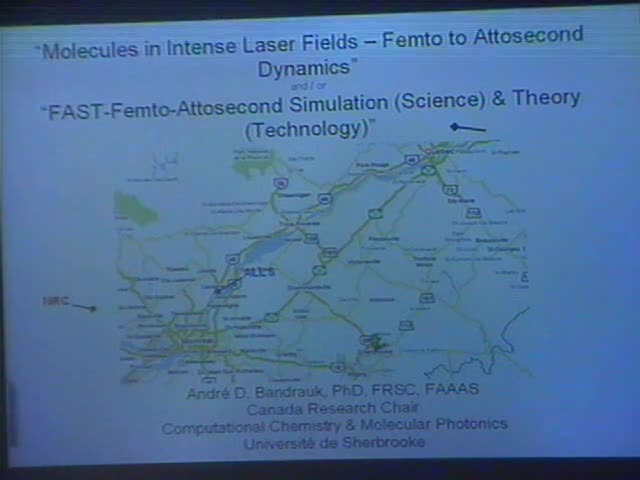Maxwell-Schrödinger equations for ultrashort intense laser pulse propagation in molecular media
Presenter
March 6, 2009
Keywords:
- Maxwell equations
MSC:
- 35Q61
Abstract
Interaction of ultrashort intense laser pulses with molecular
media leads to
highly nonlinear nonperturbative effects which can only be
treated by large
scale computation on massively parallel computers. Single
molecule response to
such pulses leads to Molecular High Order Harmonic Generation,
MHOHG, (1), from
which one can synthesize new "attosecond" pulses necessary to
control electron
dynamics at the natural time scale of the electron, the
attoseocond (10**-18 s),
(2).The single molecular response can be obtained from high
level quantum
Time-Dependent Schrödinger,TDSE, simulations. The collective
macroscopic
response of a molecular medium requires solving many TDSE,s
(>10**5)coupled to
the classical laser (photon) Maxwell equations (3). We will
present the
numerical methods necessary to achieve this goal, especially
the problem of
transparent and artificial boundary condition techniques in
view of the
different time scales, photon vs electron. Results will be
shown for attosecond
pulse generation and pulse filamentation in an aligned
molecular medium, the
one electron H2+ system(4).
(1).A D Bandrauk et al,"Molecular Harmonic Generation," in
Progress in Ultrafast
Intense Laser Science, vol III, edit K. Yamanouchi (Springer
V, NY,2008), chapt 9.
(2).A D Bandrauk,F Krausz, A Starace, "Focus on Attosecond
Physics," New J
Phys, 10, 025004(2008).
(3).E Lorin,S Chelkowski, A D Bandrauk,"Maxwell-Schrödinger
Equations for
Nonlinear Laser Propagation in Molecular Media," Comput.
Phys. Commun. 177, 908 (2007).
(4).E Lorin,S Chelkowski,A D bandrauk,"Attosecond Pulse
Generation for Aligned
Molecules," New J Phys, 10, 025033(2008).
